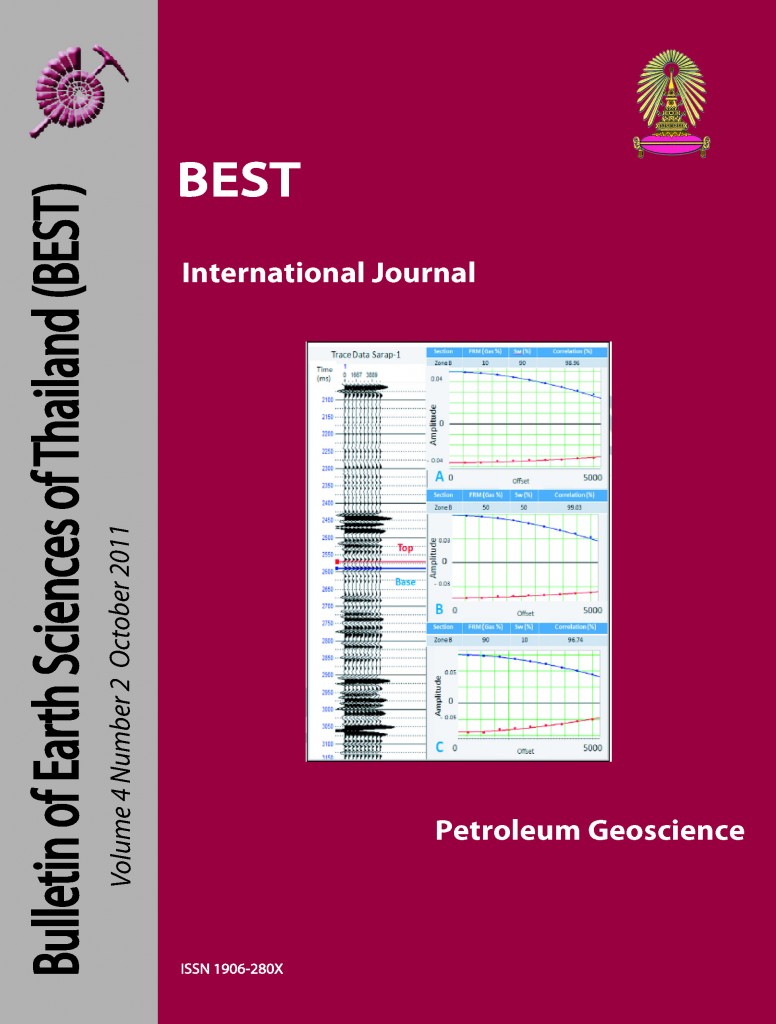Structural Style and Tectonic Evolution of the Nakhon Basin, Gulf of Thailand
Main Article Content
Abstract
Nakhon Basin lies at the western margin of the Gulf of Thailand. Seismic interpretation study was carried out to identify structural features for better understanding of tectonic evolution of the Nakhon Basin. The main observed structure features of the area were growth faults, extension fault blocks, inversion and detached normal fault assemblages. The initial rifting created half grabens in Late Oligocene. Rifting phase was followed by inversion. Then in Early Miocene, reactivation of faults associated with initial rifting occurred due to the second phase of rifting and post rift thermal subsidence started during Middle Miocene, which continues until recent. The basin formed in response to oblique extension resulting from a component of right-lateral motion.
Article Details

This work is licensed under a Creative Commons Attribution-NonCommercial-NoDerivatives 4.0 International License.
Copyright © 2008 Department of Geology, Faculty of Science, Chulalongkorn University. Parts of an article can be photocopied or reproduced without prior written permission from the author(s), but due acknowledgments should be stated or cited accordingly.
References
Corti, G., 2011, Evolution and characteristics of continental rifting: analogue modelinginspired view and comparison with examples from the East African Rift System: Tectonophysics, in press.


